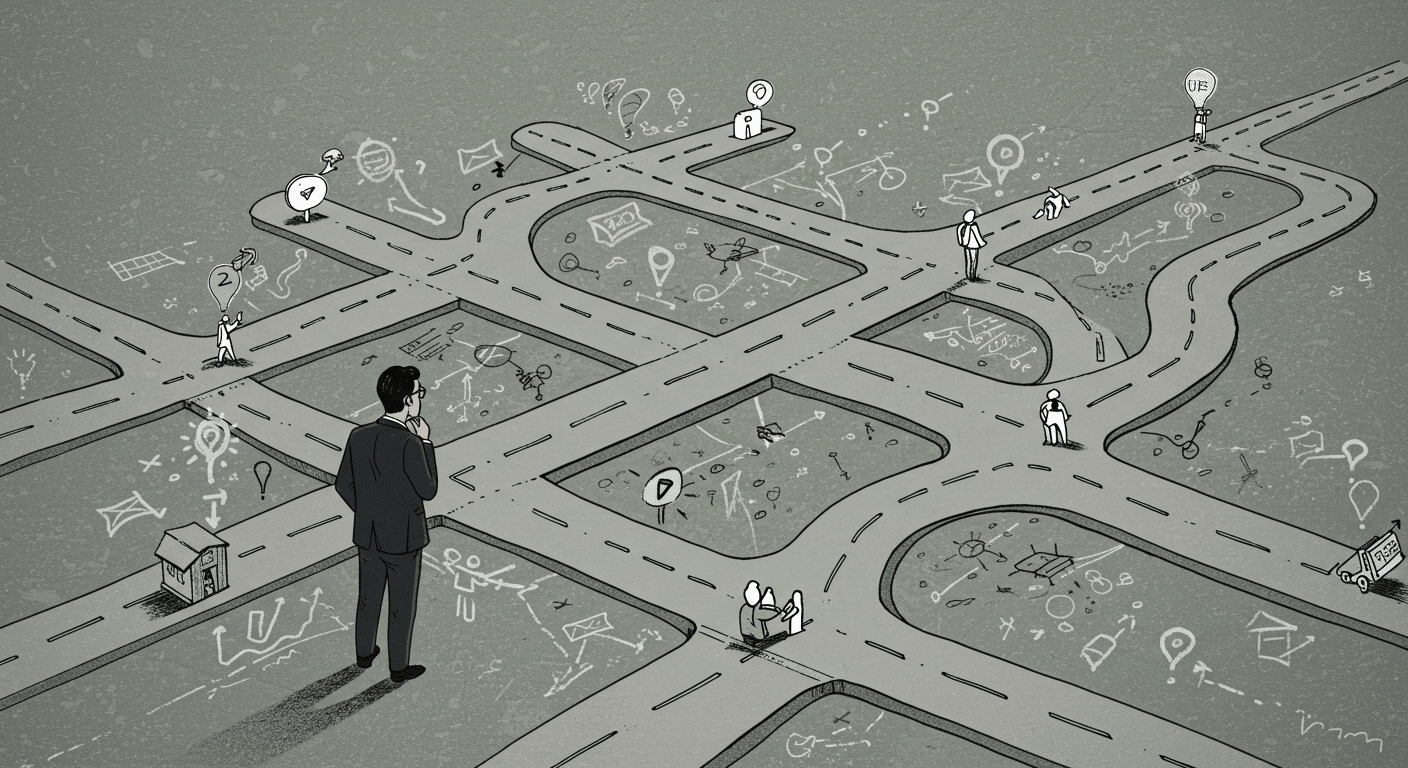Mitigating Crisis Risk with Smart Strategic Planning
The Road Ahead
Entrepreneurship has never been for the faint of heart. The business cycle’s continuous ebbs and flows leads to inevitable turnover as some businesses fail during recessions, while others emerge to capture growth opportunities during recovery. While no one can predict the duration of the economic turmoil ahead of us, CEOs are preparing for what’s to come. With the risk of diminished profit, interruptions to cash flow, and a slow road to a post-COVID economy ahead, business leaders are tasked with creating strategic plans that are easily implemented and reactive to emerging risks.
Risky Business
Between 2008 and 2010, over 200,000 small businesses failed.
A preview of the potential business impact of COVID-related economic downturn came this week in the form of a new survey of 3,500 CEOs conducted by YPO.
This YPO survey found 64% of executives expect reduced revenue a year from now. Of all CEOs, 43% predict revenue decreases of more than 20% a year from now.
In total, 11% fear their business will not survive the current economic downturn. This fear is concentrated in the hospitality and restaurant business (41% of CEOs predicting failure) with aerospace (30% predicting failure), retail (19%), and education (19%) following with the highest risk.
However, outweighing the 11% currently predicting closing within a year are the 16% of CEOs who believe that their revenue will actually be higher in a year.
While industry seems to be a driving factor for risk, the fact remains that opportunities will emerge and some businesses will be well positioned to take advantage of emerging trends.
Planning for Risk Mitigation
The consequences of not having a plan for weathering the current downturn are obvious from the survey responses. With many businesses expecting severe impacts, there may be an impulse for leaders to tighten control and seek certainty.
As McKinsey describes in their outline for “Positive Leadership in Uncertain Times”, effective crisis leadership requires adaptability and broader stakeholder input. CEOs must seek to improve communication and ability to quickly stand-up cross functional response teams to mitigate risks as they emerge.
“Empowering leaders with the right temperament and character—those who stay curious and flexible and are willing to make the tough, even unpopular calls”, McKinsey explains, “is vital for thoughtful and swift decision making.”
Acting quickly and enabling leaders within the organization to execute on priorities creates the dynamic, responsive planning the dangerous road ahead will require. As General Patton famously stated “A good plan violently executed now is better than a perfect plan executed next week.”
Standing Up Your “Tiger Team”
On our most recent Daily Dose webinar, experienced entrepreneur and current Montreal-based strategy coach Shawn Johal explained how he grew the lighting business, which he started in 2009 in the midst of a recession, to over 40 employees.
As he coaches businesses to do now, Shawn believes in the power of cross-functional “circles” to focus on critical priorities in the organization. At Align we’ve termed these “Tiger Teams” (no relation to a certain Netflix show), although many organizations still call these teams “committees”.
Whether that may be obtaining federal loan assistance, expanding product offerings, or improving employee well-being while remote, critical strategic priorities often require contributions from multiple areas of your company. The ability to rapidly stand up and align contributors from verticals as different as HR, accounting, sales, marketing, and management around a single strategic plan may be a new skill for organizations or be more challenging to achieve while working remote.
The Tools to Mitigate Risk
To build resiliency, organizations may need to explore new tools to quickly build alignment and deploy solutions in reaction to emerging threats. While working remote, this may require new tools for the three facets of successful strategy: planning, communication, and execution. Let’s break down what’s needed for each of these areas.
Strategic Plans
Even as plans adjust to shifting conditions, they should always be in-line with your team’s values and long-term vision. Even when long-term strategic plans seem iffy, keeping your team’s “Why” front and center keeps up the intrinsic motivation that powers performance.
Sharing strategic plans transparently, even if they are subject to change, keeps teams aware of what needs to be accomplished and engaged in driving the success of your organization.
Communication
While working through chaotic conditions with a dispersed team, regular feedback loops become more critical than ever. Consistent communication helps teams identify opportunities and threats arise, share plans effectively, and stay updated on progress towards goals.
Execution
Transparent tracking of new priorities keeps teams on the same page and ensures progress is made on critical work. When executing properly on a project may determine the fate of the business, it’s critical to quickly identify when goals are pacing behind. Just as plans need to be agile and flexible, so too must be their execution.
Resiliency Today, Growth Tomorrow
Strong businesses are created in turmoil. There is a long list of companies built during the last recession (Netflix, Uber, and Slack to name a few). Organizations that build capacity and agility now stand to do . Shawn Johal used his “circles” concept to drive 3X revenue growth in his lighting company following the recession.
As Liz Hilton Segal explains for McKinsey, “The ability to understand who we are and what we value, recognize our responsibilities and our opportunities, and chart a course based on our most fundamental goals while supporting our own emotional resilience and that of our organization—these are skills that will fortify us in the years and decades ahead.”
While the road ahead is rocky, there is light at the end of the tunnel for companies that use the crisis to become stronger. While resiliency can’t be built overnight, the tools and processes that empower teams to be resilient are within reach.
If you are planning to start setting and tracking new goals for your business, read the Quick Start Guide to Goal Planning and Tracking or talk to an Align advisor today!





